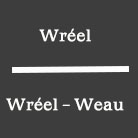Understand the properties of minerals: Mohs scale, density, transparency.
Mohs scale - Hardness :
is a method used to measure the hardness of minerals, i.e. their ability to resist scratching and wear. It was developed in 1812 by the German mineralogist Friedrich Mohs. This scale ranks minerals on a scale of 1 to 10.
Practical use
Knowing the hardness of a mineral enables you to assess its resistance to wear and scratches.
The Mohs scale is a simple and practical reference for classifying minerals according to their hardness.
The table below shows that talc and gypsum have a hardness of ±1 to 2 and can be scratched with a fingernail.
Calcite has a hardness of ±3 and can be scratched with copper.
Fluorite and apatite with a hardness of ±4 and 5 can be scratched with a (steel) knife blade.
Feldspar, quartz, topaz, corundum and diamond are hard enough to scratch glass.

Density:
The density of a mineral is a measurement that indicates how ‘heavy’ a mineral is in relation to its volume. It is the ratio between the weight of the mineral and that of the water for the same volume. For example, if a mineral has a density of 3, this means that it is three times heavier than the same volume of water.
Density is a fairly accurate and reliable measure for identifying minerals. However, to obtain an accurate measurement, it is important to measure the weight and volume of the mineral. In practice, density is a useful criterion but often combined with other properties (such as hardness, luster, and line) to correctly identify a mineral.
How to calculate density:
Equipment required :
Precision balance: To measure the weight of the mineral.
Fine wire or support: To suspend the mineral in water.
Container of water: To immerse the mineral.
Method:
Weigh the mineral directly on the balance and note its weight (Wréel).
Place the container of water on a scale and tare (zero) the scale.
Tie the mineral to a fine wire (or use a stand), then immerse it completely in the water without letting it touch the sides of the container.
Measure its weight in water on the scale and note the (Weau).
The formula for calculating density is :

Streak:
Streak is an important property used to identify minerals. It is the colour of the fine powder obtained by rubbing a mineral on an unglazed surface. This method is more reliable than observing the colour of the mineral in its raw state, because although some minerals may have different colours depending on impurities, their line remains constant.
Example of the use of the streak:
- Haematite: Although haematite appears in different shades (red, black or silver), its streak is always brownish red.
- Pyrite: Pyrite leaves a greenish-black streak, very different from its apparent colour.
- Calcite: It generally has a white streak, regardless of its external appearance.
The streak is often used to distinguish minerals that may appear similar to the naked eye. For example, pyrite and gold can be confused because of their colour, but their streak clearly differentiates them, as real gold leaves a yellow streak, whereas pyrite leaves a greenish-black streak.
The advantage of the streak is that it does not change with variations in colour or alteration of the mineral. It is therefore a reliable method of identification, particularly for minerals with deceptive external appearances.
Transparency:
Transparency is another key mineral property that refers to the way light passes through a mineral. It is an important criterion in the identification of minerals and can vary from one mineral to another.
1. Transparent
A mineral is considered transparent if light passes completely through it, and we can see clearly through the mineral.
Example: rock crystal and diamond are transparent minerals.
2. Translucent
A mineral is translucent if light can pass through it, but the objects on the other side are not clearly visible. The light is scattered as it passes through the mineral, giving a slightly blurred appearance.
Example: Calcite and fluorite are often translucent, as are certain varieties of quartz.
3. Opaque
A mineral is opaque if no light passes through it, even in small quantities. It does not let light through, whatever its thickness.
Example: Hematite, pyrite and galena are opaque minerals.
In conclusion,
Density, hardness, line and transparency are important characteristics for identifying minerals. These properties make it possible to carry out rapid and accurate analyses, whether for an experienced collector or a beginner. However, other criteria such as luster, cleavage, colour and crystal structure also play a key role in identification. These more subtle criteria are often acquired with time and experience. It is by handling minerals and observing them regularly that you will develop a finer expertise. To expand your knowledge and discover other specimens, feel free to explore our catalogue of minerals for sale.
